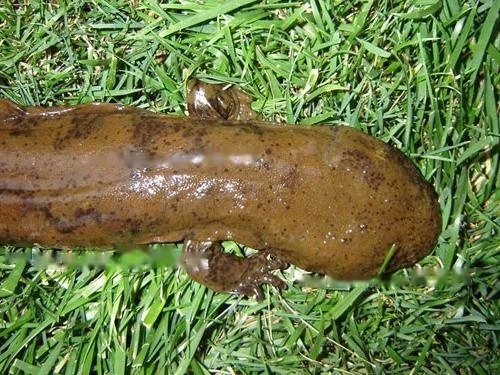[What do dolls fish eat] Above, we introduced the main types of bait for raising salamanders | giant salamanders and how to find bait for salamanders | giant salamanders. The following mainly introduces the feeding skills for raising salamanders | giant salamanders. For this rare species, care must be taken in feeding.

1. Diversified collocation
Giant salamanders are carnivores, and salamanders mainly prey on crabs, frogs and small fish in the wild shrimp etc. The bait for artificially domesticated salamanders is mainly made of fish pieces such as Nayu and carp. At present, the more economical bait is white scales, which are appropriately matched to feed some lobsters or frogs. While ensuring normal feeding, an appropriate amount of vitamins should be added to the bait every month, one tablet each time, 2 times a month. Try to diversify the bait to ensure the supply of various nutrients, promote the normal growth and development of salamanders, and reduce the bait coefficient.
2. Timely domestication of fish feeding
After domesticated salamanders, salamanders can eat food in time to reduce the waste of food. The specific method is: fish should be fed after removing indigestible bones, spines and fins, and disinfected with 2% 3% salt water. . At the beginning of domestication, the fish pieces are skewered with wire and swing in front of the head and mouth of the salamander to attract food. It takes several more times. Generally, after half a month to one month of domestication, the salamander will take the initiative to feed, and it is no longer afraid of the breeder. Greatly increase the one-time food intake. Feed regularly at 5:00 p.m., and pick out the remaining bait the next day to prevent the residual bait from rotting and deteriorating and polluting the water quality.
3. Control amount and frequency
There are obvious individual differences and seasonal changes in the food intake and feeding frequency of salamanders and giant salamanders. be adjusted. The amount of feeding each time is equivalent to 2-4% of the salamander's body weight. The feeding frequency is 4 days and 7 days in winter (water temperature, 10 degrees Celsius), and once every 3 days and 5 days in spring (water temperature is 11 days and 1 day). , in summer (18-24°C) for 2-3 days, and in autumn (15, 20°C) for 2-5 days, the water temperature directly affects the feeding intensity and feeding frequency of large n, the feeding principle is to The feeding intensity of large n is used to determine whether to feed the bait. Our experience is based on the fact that the mantissa ingested by the salamander at one time accounts for 60% of the total mantissa. The bait of salamanders that do not eat is switched to other big yu that eat.
4. Feeding management
①. Do a good job of the salamander | giant salamander feeding log, establish a detailed feeding and growth file, and weigh each fish once to facilitate Adjust the feeding amount in time and grasp the weight gain of the salamander.
②. Adjust the water temperature and room temperature. In the high temperature stage of summer and autumn, be sure to adjust the water and room temperature below 25 ℃. It has been proved that the water temperature exceeds 25°C, which has side effects on the feeding, growth and development of salamanders.
③. Sewage and water changes should be done in the breeding pond every day, and the growth of salamanders should be observed frequently. At the same time, attention should be paid to anti-theft and prevention of salamanders from escaping.
④. Feed the bait regularly at 5:00 pm, and pick out the remaining bait the next day to prevent the residual bait from rotting and deteriorating and polluting the water quality.
![[Dog Training 5] The training method of pet dog dining etiquette](/static/img/12192/12192_1.jpg)




